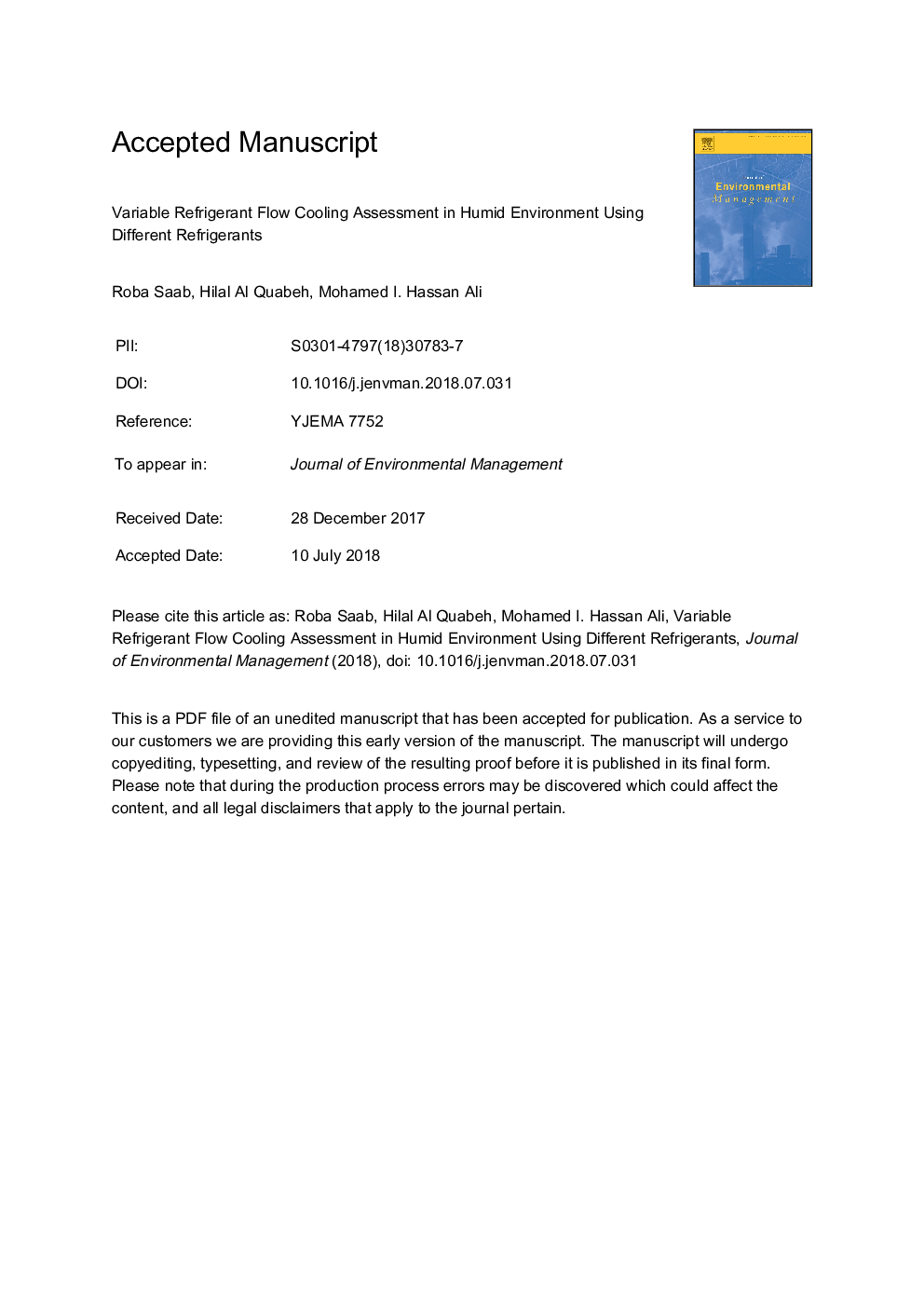| Article ID | Journal | Published Year | Pages | File Type |
|---|---|---|---|---|
| 7475642 | Journal of Environmental Management | 2018 | 27 Pages |
Abstract
In this study, VRF units from different manufacturers were modeled and compared using engineering equation solver (EES) and IPSEpro software. The models, which were mainly developed on EES were repeated for validation on similar models that have been developed using the IPSEpro software, and the results were in agreement within 6% uncertainty. Parametric studies were done after modeling the system on EES, where both the high and low pressures in the cycle were varied to obtain the corresponding COP and second law efficiency operating range. It was noticeable that COP and second law efficiency are significantly affected by the evaporator and condenser temperatures and pressures. In addition, as significant concern has been raised due to the impact of refrigerants on global warming, different refrigerants were considered and the results showed that refrigerant R-410a would be the second most efficient refrigerant, after ammonia, for such systems. Finally, an effectiveness NTU evaporator model was implemented to minimize the overall power consumption of the VRF system under various zone loads. It was found that, under a typical set of zone loads, the optimal refrigerant evaporating temperature is 11â¯Â°C, when the sum of indoor fan power and outdoor unit power is minimized using the exergy balance. These results helped decision makers to install the VRF system for the first time in that hot and humid area. The preliminary results for May and June sowed an average energy saving of 32% with variable evaporators and condenser speed and variable compressor frequency.
Keywords
Related Topics
Physical Sciences and Engineering
Energy
Renewable Energy, Sustainability and the Environment
Authors
Roba Saab, Hilal Al Quabeh, Mohamed I. Hassan Ali,
